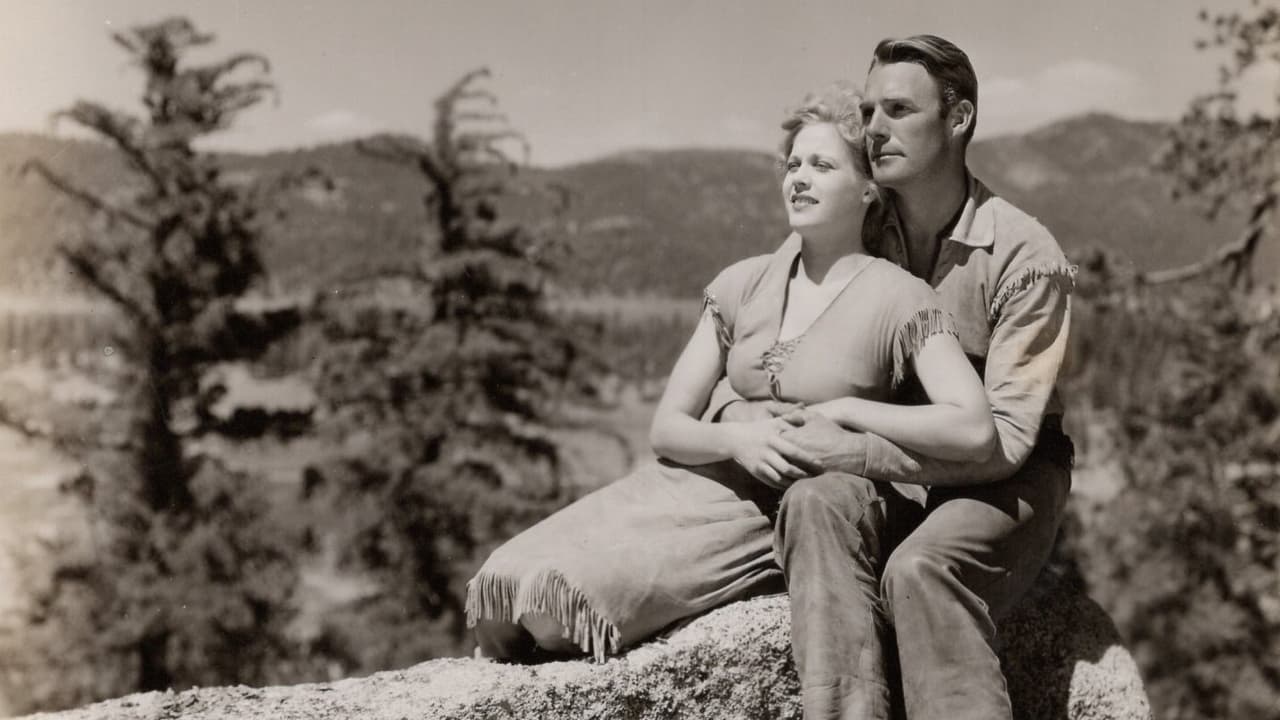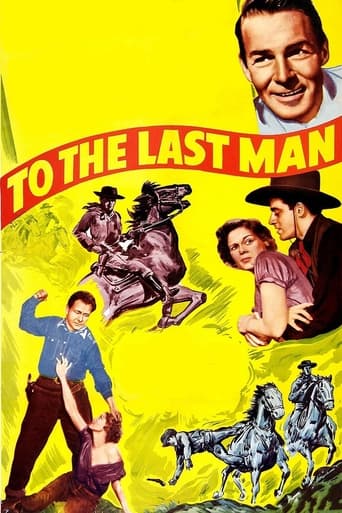

This is without question a Pre-Code Western that featured two people that would become legends. Shirley Temple and Randolph Scott. What is interesting is Shirley is not credited and Scott ( like the rest of the cast) is not credited until he shows up. The main star in the movie is Esther Ralston ( Ellen Colby) who is the daughter of Jed Colby ( Noah Beery) who murdered the Grandfather of Lynn Hayden ( Scott). A couple of points:,the bad guy usually has some redeeming characteristics ( like caring about his daughter), Colby does not and spoilers ahead: He gets murdered by the even nastier Jim Daggs ( Jack La Rue ( an actor like Berry known for playing villains)). It is about a feud between the two families and what is interesting is there is no question who is good and who is bad. Something else you never see is Colby and Daggs succeed in killing all of the male adult members of the family ( except a badly wounded Lynn). It is actually Ellen that is the real heroine of the movie. She is able to fight off Daggs so that Scott can finally kill him, and They show a photo where they marry at the end. You rarely see a woman who is so obviously a white trash tomboy especially in Westerns ( even Indians are usually not shown that way). Another point is the price that both Ellen and especially Lynn pay. One finding out how creepy her father is the other losing family members. One more point. This movie that I saw on TCM, is the restored print from the Museum of Modern Art and you can see a clear difference between that and Public Domain prints. This is an excellent Western and a MUST for Scott fans. Also do not overlook the Pre-Fox ( this was filmed at Paramount) Shirley Temple who steals the scenes she was in, and Esther Ralston. 10/10 stars.
... View MoreI saw this film under the title "Law of Vengeance", with an interesting convention of introducing each character with their film credit when they first appeared on screen. It's not unusual to see early silents and even talking films show all the characters in the story before the action gets under way, but I don't think I've seen it done this way before. Which means Randolph Scott, top billed but not appearing for about the first twenty minutes, suddenly shows up as Randolph Scott portraying Lynn Hayden.Probably the best recommendation to see this film is for the players, a fairly top flight cast (perhaps in retrospect) including Scott, Buster Crabbe, Barton MacLane, Jack Larue and Noah Beery. Funny, but Beery looked more like his real life son Noah Beery Jr. before doing the fifteen year prison sentence in the story. Then suddenly he looked like a totally different actor. I'll have to go back and check that out again.The bigger surprise though might have been catching Shirley Temple in an early uncredited screen appearance. Back in my early parochial school days, it seemed we were treated to a Temple film every couple of months. Others on this board have mentioned one of the Colby bunch taking her doll's head off with a rifle shot. I thought that was bad enough, but later in the story one of the bad guys was actually going to shoot her brother when another character ruined his aim. Seems to me that was carrying a feud just a bit too far.What I don't understand is the way the picture ended. We're led to believe that most of the Hayden clan was killed in the blast that leveled the mountainside, but it seems that the Colby bunch was buried too! Then Larue's character offs the senior Colby (Beery) in order to marry daughter Ellen (Esther Ralston), which Jed Colby didn't approve of. Of course, Lynn Hayden had other plans, and in one of the more interesting finales to a final showdown you'll ever see, Hayden strategically positions a knife to defeat Jim Daggs, even though he was almost unconscious. Not a move I would recommend for a would-be hero in real life.
... View MoreAfter spending fifteen years in prison for killing the patriarch of a rival clan, Noah Beery heads west to continue the family feud that turned him into a murderer. While he attempts to goad his rivals into another round of killing, Beery's daughter falls for Randolph Scott, who as a boy watched him murder his grandfather.Another decent entry in Paramount's Zane Grey series, this features early performances from Scott and Buster Crabbe, as well as an early directing job for the great Henry Hathaway.It's also fairly interesting in it's use of the old silent film trick of introducing each cast member as they appear, via a subtitle and a little bit of precode skinny dipping.Speaking of precode, this appears to be pre-common-sense as well, when in one scene a young Shirley Temple is sitting outside and a hidden bad guy shoots her doll in the head, which is only a few feet away. This might not seem very alarming today, but this was before the invention of modern special effects, when film studios employed actual sharpshooters for these types of scenes, a practice that was abandoned when James Cagney refused to do another film that involved him being shot at.In other words, A LIVE ROUND WAS FIRED PAST SHIRLEY'S HEAD!!
... View MoreSure, this one really shows it's age, and getting a decent transfer to watch is tough, but in the long run worth it.As stated by other reviewers the cast is strong and interesting. The plot is standard fair by today's standards.But what really gripes my fanny about this site and other sites that review movies, is the fact that many reviewers often are unable to critique the picture in the time frame during which it was made. In the early 30s, this was heady stuff, ya bet yer spats it was.Another thing that gripes my fanny is IMDb's requirement for ten lines of critique. Effective writing shouldn't require a maximum, guys.My fanny is getting really griped lately. There, I think I made the minimum now! Yeah, 60 years from now TITANIC is going to look real good. Yeah.
... View More